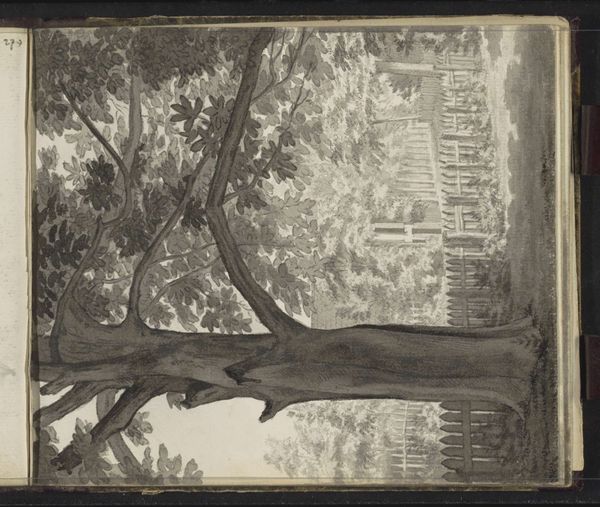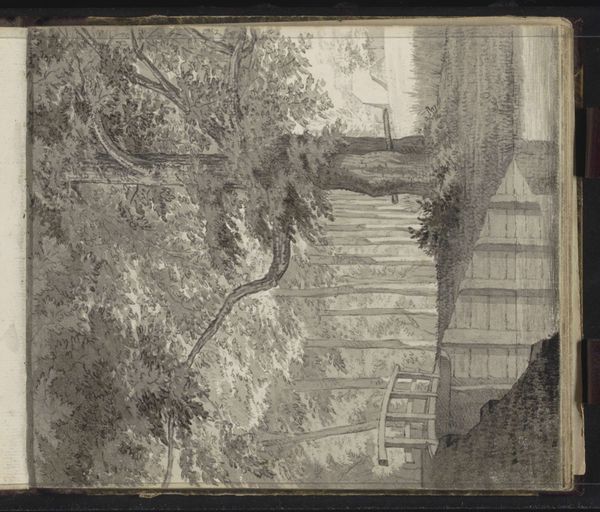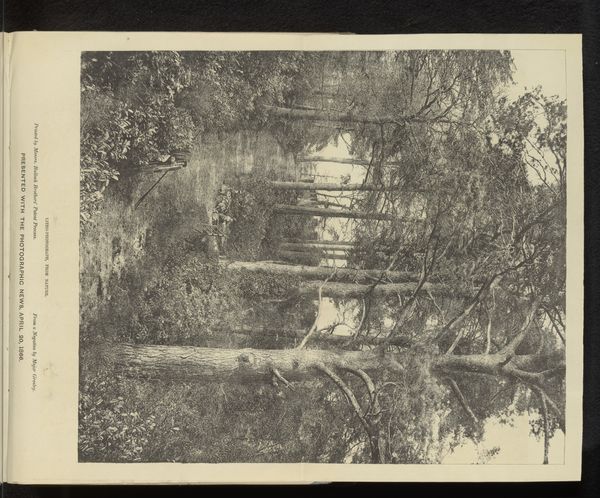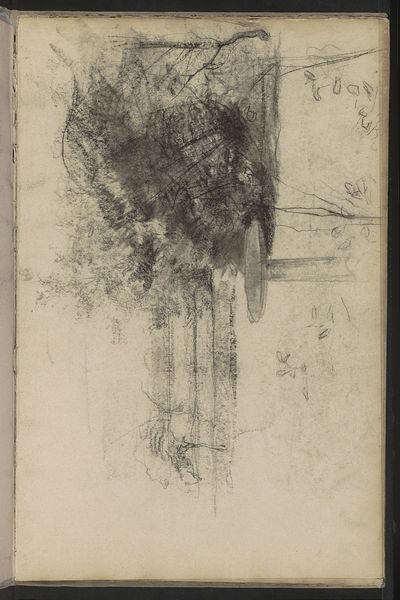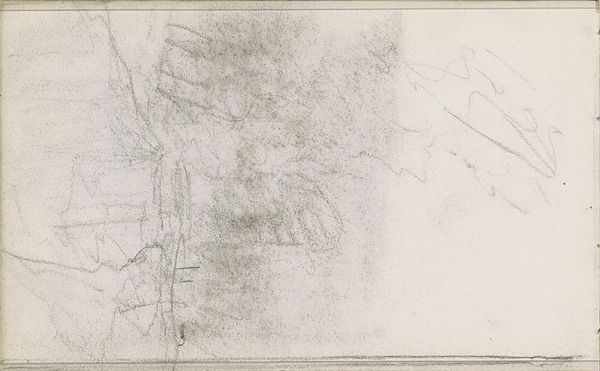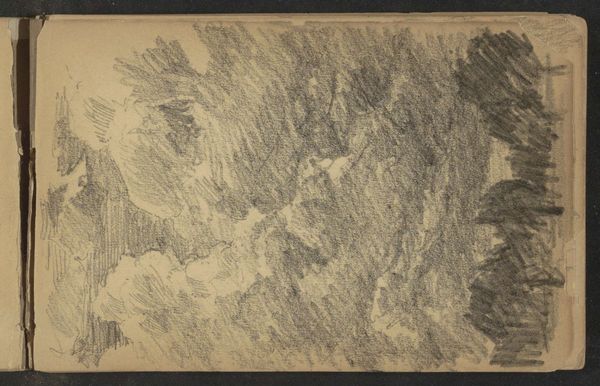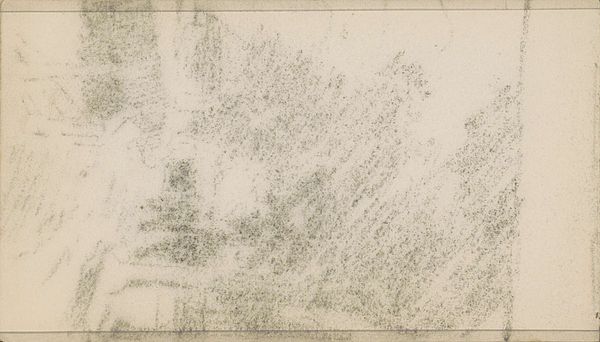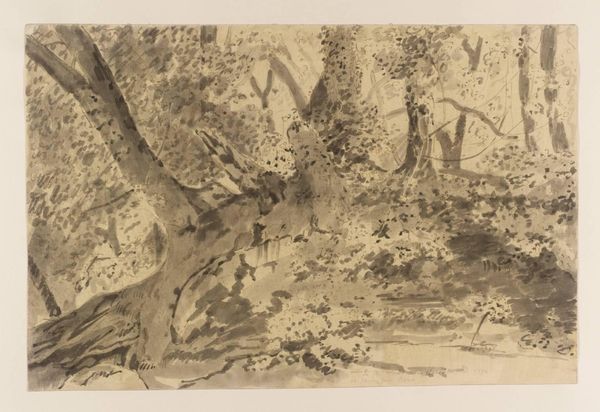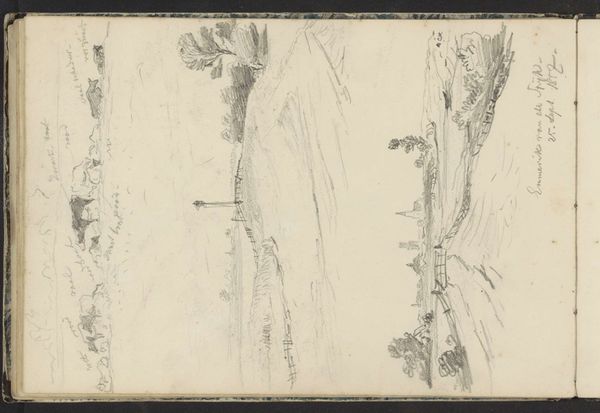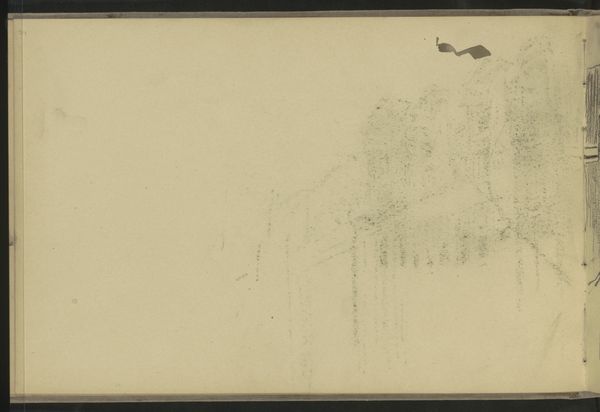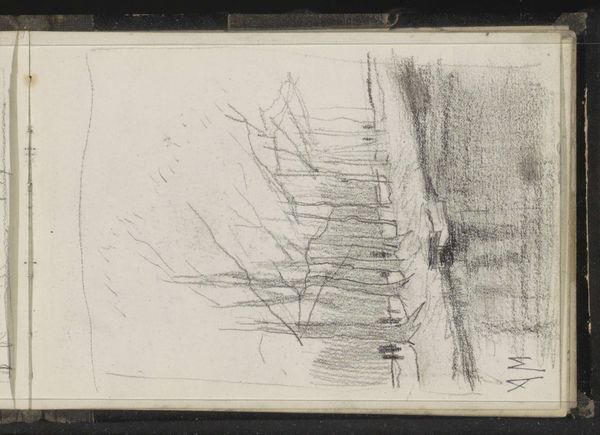
drawing, paper, pencil, graphite
#
tree
#
drawing
#
aged paper
#
toned paper
#
pen sketch
#
pencil sketch
#
sketch book
#
landscape
#
paper
#
form
#
personal sketchbook
#
romanticism
#
pen-ink sketch
#
pencil
#
pen work
#
graphite
#
sketchbook drawing
#
sketchbook art
Copyright: Rijks Museum: Open Domain
Hendrik Abraham Klinkhamer made this drawing of trees with graphite in the Netherlands sometime in the mid-19th century. It's an intimate study, likely from nature, that prompts us to consider the rise of landscape art and its connection to broader cultural shifts. During this period, landscape painting gained popularity, reflecting a changing relationship between people and nature. As urban centers grew, the countryside became a site of leisure, recreation, and national identity. Artists like Klinkhamer captured the beauty of the natural world, appealing to the romantic sensibilities of the time. It's interesting to consider how these images might have shaped viewers' perceptions of nature, influencing ideas about conservation and environmentalism. To delve deeper, we might explore Dutch art institutions of the period, examining exhibition records, critical reviews, and artists' writings. By understanding the social and institutional context, we can appreciate how seemingly simple drawings like this one contributed to broader cultural trends and debates about the relationship between art, nature, and society.
Comments
No comments
Be the first to comment and join the conversation on the ultimate creative platform.
